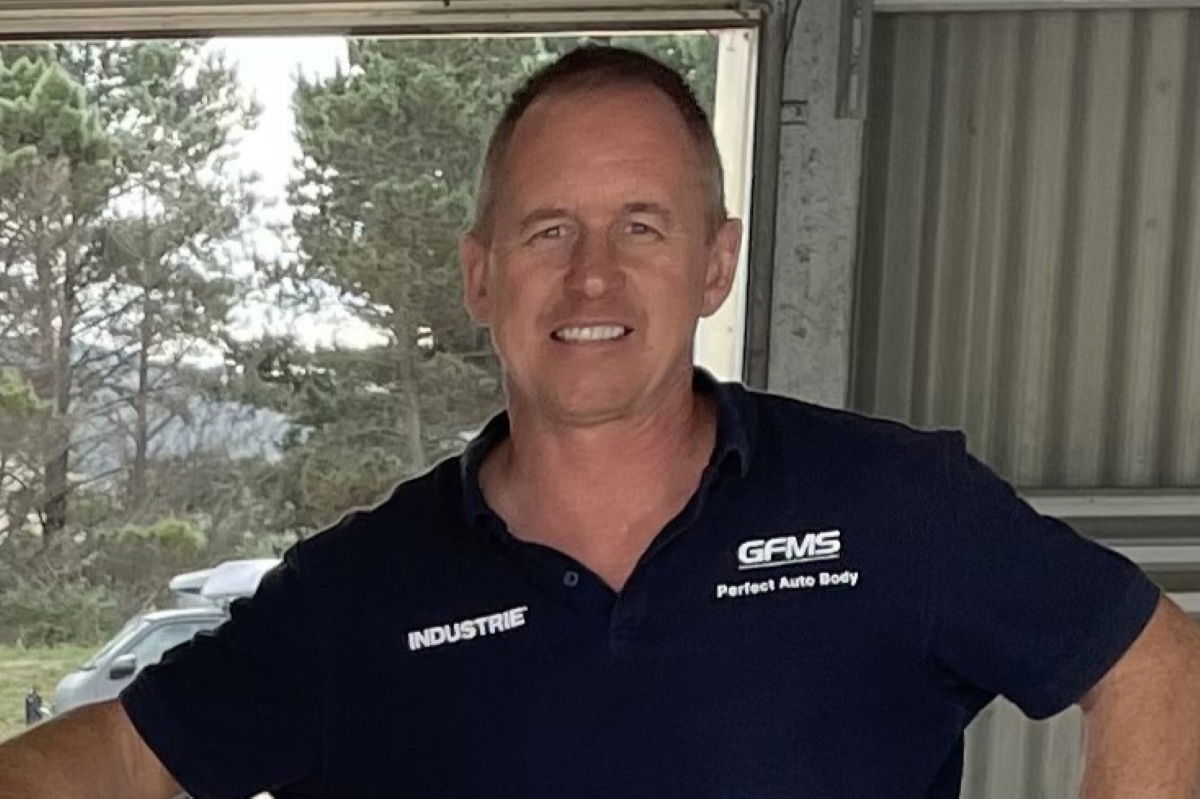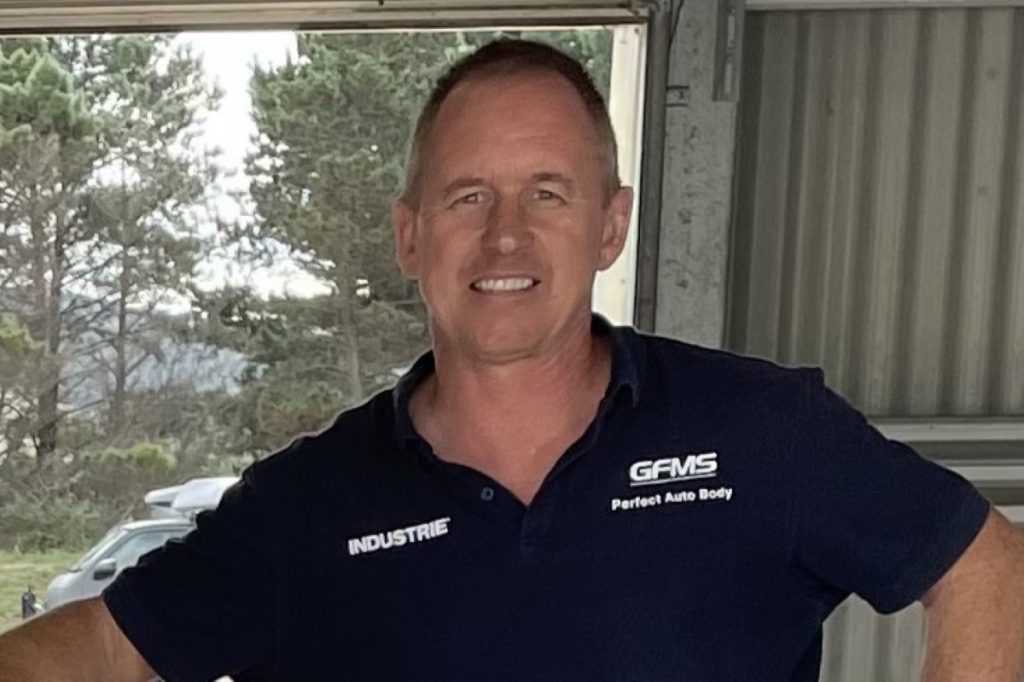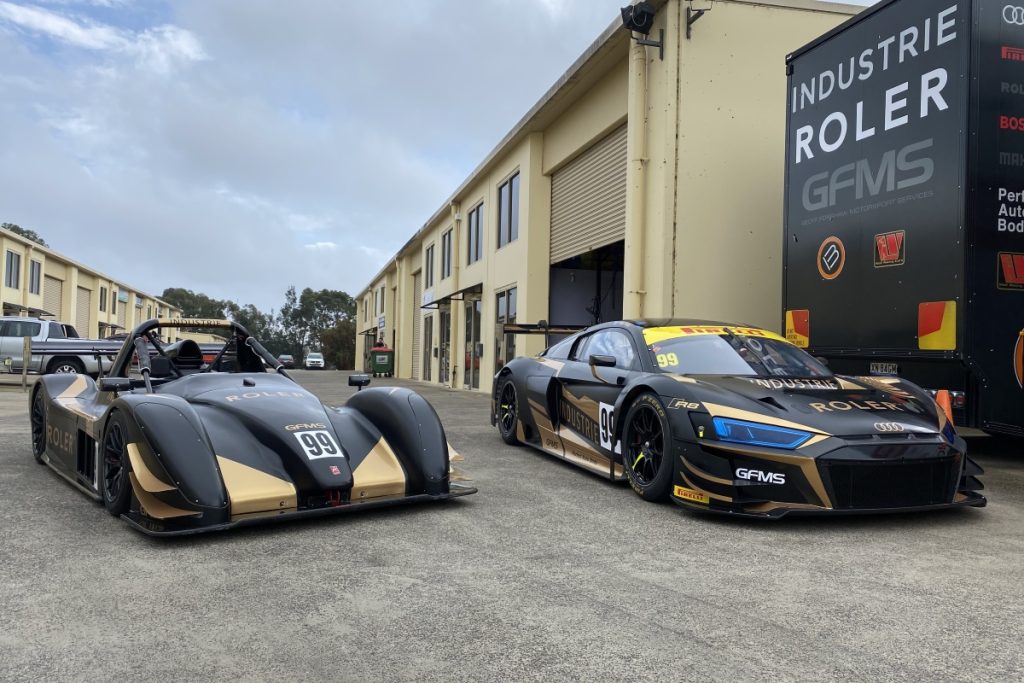

The interest started as a 17-year-old when his father Colin purchase and raced a Mini. It would not be long before Geoff had one as well to build up and race, and they joined the Lithgow District Car Club.
“I only just got my learner’s permit. We found another car in Victoria, only it wasn’t even a rolling chassis, it was sort of half a car,” he said.
“We had iron heads to start with and then the crossflow heads came along, a bit more powerful and we won a few races in those.”
To fund this, his father was able to get Geoff and his good mate from their school days Mark Brame, apprenticeships as electricians. They worked together on the new Parliament House in Canberra during its construction in 1988.
Mark also brought a Mini before both moved to a pair of Suzuki Swift GTi Production Cars.
They shared a Suzuki at the 1991 Bathurst 12 Hour along with Henry Draper, won their class by four laps and finished 10th outright. The next year Geoff was in an outright car, a Toyota Supra with Neal Bates and Geoff Full. They qualified third fastest and were competitive until ran out of brakes and had other dramas.
Geoff also competed in the 1991 Tooheys 1000, in one of four Bob Holden Motors-entered Toyota Corollas but recorded a DNF in the car he shared with Richard Vorst. The following year, also in a Corolla, ended in far more dramatic circumstances.
“I wasn’t going to drive and was always the third driver. We prepared the car in our motorsport business at the time, which was in partnership with another guy. When I got into the car, they didn’t plug my radio in. I tried to grab the cord but couldn’t reach it, so I just drove without the radio.
Then it started rain just ever so slightly, and Geoff [Full] was in front of me. He was also pitted next to us, and he decided to pit for wets. The old pit areas back then were very cramped, I thought I would do one more lap on the slicks.
“But it bucketed down as I approached Turn 2. I thought I had slowed down enough but obviously didn’t and crashed into the wall right at the opening.
“I broke the ball on my left foot, on the outside of the ankle. Back then we had aluminium roll cages, and it was bolted just to the floor. The right front wheel came through the floor and crushed my legs against the transmission. I couldn’t get my legs out to start with and I could smell fuel on the ground.
“I managed to jump out the side of the car, all the adrenaline’s flowing and all that sort of thing. I didn’t realise the ball was broken at the time. I’m limping around, but the feeling no pain. They were also a bit relaxed on checking your clothing and all that sort of stuff. I was more concerned that I had a pair of Balmain football socks on and not the fireproof ones.
“I didn’t have my shoes or socks on when the tow truck driver took me to the medical centre. I left them in the truck. They didn’t really do anything about my ankle, Jo who was girlfriend at the time and wife now, went to the local hospital to get crutches for me.
“I didn’t have an x-ray until after we drove back to Sydney. The ball on the outside of the ankle was broken and I had a plaster cast put on the following day.”
That was quite the end of his racing career as he was back for the 12 Hours of ’93 and ’94 where he joined Phil Alexander and Warren Rush, firstly in a Ford Laser TX3 Turbo for 17th outright. Then in a Nissan Pulsar SSS, they were 19th and second in Class B, one lap behind the class winners.
The interim mechanical shop was struggling, barely making ends meet and Geoff had issues with his business partner. He went back to electrical work until around 1999 with his last major job, work on the Sydney Olympic Stadium.
His racing career stopped with the escalating costs associated with it. He wasn’t wanting to chase sponsorship and it has never been in his nature to race on someone else’s funding. He would much rather race and enjoy it and pay for it himself.
Helping Neal Bates on his Toyota Celicas in the Australian Rally Championship weekends proved fruitful as he took on a fulltime job building rally engines in 2000. That meant a move to Canberra with his wife and young son Riley. His second son was born in the national’s capital.
When his mother-in-law passed away in 2003, the family moved back to Sydney. But Geoff continued working for Bates Motorsport and staying in Canberra throughout the working week and back to Sydney for the weekends.
The Global Finance Crisis caused the shutdown of the rally program in the late 2000s. That triggered a permanent move to Sydney and the start of the mechanical business that continues to this day.
He started working on Production Cars and when one owner brought an Audi R8 GT3 car which he wanted Geoff to work on. Brame let him set up in half of one factory of his electrical contracting premises in 2009.
Geoff had an association with BTD – a engine and drive systems developer in Belgium – when he was building the Toyota rally engines. By 2009 BTD were heavily involved in a Audi GT3 engine program and the association was renewed.
The relationship between them was solid and they worked through an issue with the valve sprints. The association went to the point that rather than send the engines to Belgium, BTD would send the parts needed to Geoff for him to do the rebuilds.
He worked on the Audi powerplants for several years, catering for the Melbourne Performance Centre and other customers such as Nick Kelly and Vince Muriti, both of whom also raced Mercedes AMGs as well.
Geoff finished with GTs as the costs have become excessive and has turned to running several cars in Radical Cup Australia and NSW Supersports.
Kelly has also raced a Radical SR8, also a Radical Typhoon and a Wolf and has ordered the latest generation of the Radical SR3. Brame has an SR3 and the others he works on include Jim Hernandez, Warwick Morris and Bill Medland.
On weekends he oversees the preparation and the running of the cars, although at times he is on the radio. While he enjoy being on the cans, talking to drivers when they’re racing, he prefers to be behind a contracted engineer who is on the headsets.
Because Geoff has driven the cars, the drivers give him feedback. He knows what they’re talking about. “If you haven’t raced the car previously, it’s hard sometimes.”
“I’ve got guys like Josh Peacock who used to work for Radical Australia. He’s now lives in Tassie, he’s a great guy, knows the cars inside out and back to front. I also have another couple of other subcontractors, that have experience on the cars and know the procedures. It works well!
“They just come in do what you want and get paid. I pay for everything from the time they leave home to the time they get back home, that includes everything, accommodation, meals, hire cars, and if they want, a couple of beers at the end of the day.
“All those funds, basically get split from the number cars we are running, whether it is two, three, four or five cars, and depends on how many people we need.”
Because GFMS is Sydney-based, much of his contracted crew is local which does keep costs in check to a degree. But obviously there are the occasional interstate jaunts. One of the major problems in Sydney is getting track time for testing.
There are limited bookings available, and Radicals are classified as open wheelers. He is proposing to take cars to Queensland this year so they can get in some more track days until One Raceway is up and running.
The mechanical business is a one-man show, although he did have a couple of men working for him until Covid hit and then his son until he joined the Australian Defence Force.
“I haven’t put anybody else on, even after Covid. I lost a couple of clients on the GT side of things and for a while I wasn’t exactly sure where I was headed.
“I’ve got enough work for me, no problems at all. I don’t want to put somebody on and then run out of work for them, and I didn’t want to get as big as Garth Walden Racing are, or anybody like that.
“I really like and enjoy the sport and I have a relatively good mechanical skill set. Everybody just sort of knew me as a Toyota person back then. So that’s when I expanded out and got into the Audis, Porsches, Mercedes, all those sorts of things and Radicals.
“I like to give my customers the personal touch and physically work on their cars which I take to and from the races. If there’s a problem, I like to be there to try and sorted it out,” he concluded.























Discussion about this post